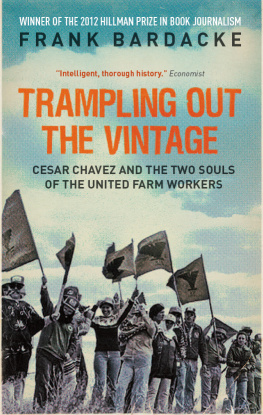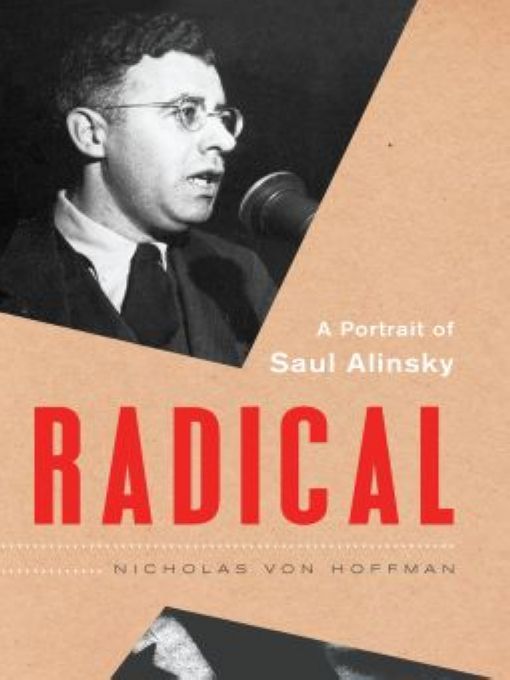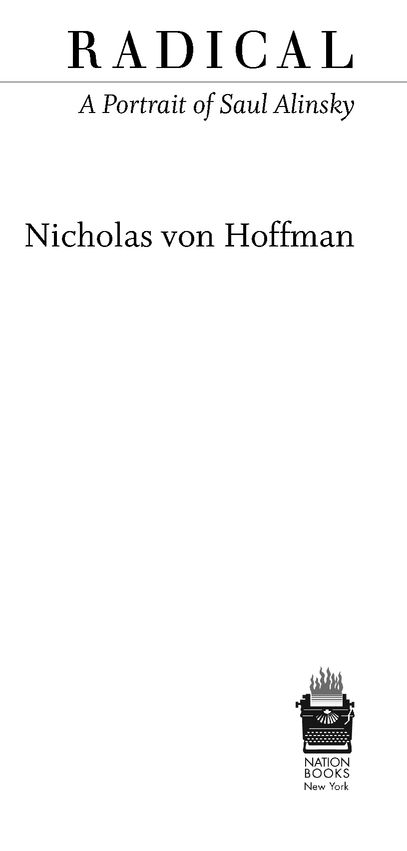Table of Contents
ALSO BY NICHOLAS VON HOFFMAN
A Devils Dictionary of Business
Hoax
Citizen Cohen
Organized Crimes (fiction)
To Esme and Gregory
The sleeping are coworkers and fabricators of the things that happen in the world.... To those that are awake there is one world in common, but of those that are asleep, each is withdrawn to a private world of his own.... The people must fight for their law as for their walls.
HERACLITUS, ONE OF SAULS FAVORITE WRITERS
ACKNOWLEDGMENTS
Many thanks to Susan Dooley Carey who fine-combed the manuscript and rearranged it to give it the appearance of a book. As many thankyous go to Sanford Horwitt, Alinskys biographer, for hours of discussion, innumerable suggestions and much encouragement and the same to Lester Hunt for his generosity. Thanks also to my editor, Carl Bromley, who thought up this project and sped it along with intelligent guidance, editorial acuity and cheerful encouragement. Gratitude to my agent, Mary Evans, for her robust representation and suggestions for improving the manuscript. Many warm thanks also to Irene Alinsky, Sauls widow. To my son Alexander, my gratitude for his insights, his erudition and for listening to his old man gabble on about the project.
I am also in debt to a number of people who were good enough to give of their time and intelligence. Among them are Edward Chambers, Michael Gecan, Arnold Graf, Richard Harmon, Jonathan Lange, Gretchen Laue, Phil Primack and Wade Rathke.
INTRODUCTION
Looking down from Heaven or up from HellSaul Alinskys preferred postmortem abodehe must be pleased. He loved attention and these last couple of years he has been getting it. His books are selling by the thousands, he is being credited with electing a president and hundreds of thousands who had not heard his name five years ago are clogging cyberspace reviling him.
The man who invented community organizing, the big, laughing, brazen, sensitive, contradictory, gutsy, utterly outlandish head of everything, as Georgie Anne Geyer referred to him, is getting the credit or the blame for being the formative factor in the political development of Barack Obama.
The organizing techniques used by the Obama people in the 2008 Iowa primary, which changed Obama from a long shot to a serious candidate, are supposed to have been copied from Alinsky. He is also blamed for having put a drop of his power elixir into the goblet of President Obamas secretary of state, Hillary Rodham Clinton, who wrote her senior college thesis about his work. Were you to listen to their enemies, youd believe that the number of Washington politicians who have drunk Sauls Kool-Aid grows by the month.
Even right-wingers are following his lead. Those who have taken to breaking up town hall meetings with their disruptive shouting have read or misread Alinskys book of tactics with the same assiduity as the Left. Were Saul alive he would delight in this hurly-burly. He thrived on days of tumult and nights of stress. He would have liked to have been a legend in his own time, but becoming one forty years after his death must be a satisfaction to his mischievous spirit.
If historians dwell on how much of an influence Alinsky had in the election of the first African American president they may overlook his less visible but more durable contributions. Directly and indirectly through countless organizations which spring from him he taught millions of Americans that their best and only chance of determining their lives is by organization. From him they learned that a large crowd flashing slogans on cardboard signs and demonstrating on the Mall or being dragged off by the police at an occasional sit-in cannot substitute for the power of lasting organization.
Without power, he explained, nothing can be done, no rock moved, no law written, no wrong righted. Power, Alinsky taught, comes in two forms only: money and people. If you have the money you dont need people. Without money the way to power is to organize the people.
Organization was an Alinsky specialty, as were tactics at which he was infernally creative. He was so good at them that some people mistakenly take him to be an amoral figure whose major accomplishment was the perfection of tactical monkeyshines. Through the medium of the Industrial Areas Foundation (IAF) which he began and other entities which he inspired, scores of organizations in various shapes and forms have built hundreds of thousands of homes for low-income people even as they have protected civil liberties, achieved a living wage for countless workers, gotten jobs, paved streets and schooled children. In the aggregate millions have helped themselves by banding together.
Like the heirs of the Prophet, Alinskys legatees squabble over the true meaning of the masters teachings. How ironic are these arguments about one of the least-dogmatic and most flexible of men. Alinsky believed that liberty was to be redefined and rewon by every generation according to its circumstances and the demands of its time. The constant was not this or that method or these or those tactics; the constant was democracy, a form of government as arduous to keep as it is to gain. That was Alinskys life work.
This book is not biography or an exegesis on his thinking. It is an homage, a portrait of Alinsky by someone who knew him well and loved him. There are only three or four of us still living.
A word of note: The quotes attributed to a published source can be considered accurate. Those without attribution are the authors best recollection of things said a very long time ago.
ONE
MY BLUNDERING ATTEMPTS TO ORGANIZE; MEETING SAUL AND BEING HIRED; APPRENTICESHIP IN THE URBAN WILDERNESS; WHAT IT IS AN ORGANIZER DOES AND WHY ONE WOULD EVER TRY TO DO IT; WHERE ALINSKY CAME FROM AND HOW HE WAS SHAPED; OUR SHARED OPINION OF THE RICH AND TOO POWERFUL
If the ends dont justify the means, what does?
SAUL ALINSKY
At the time I first met Saul Alinsky, circa the summer of 1953, I was twenty-two years old and believed that I had my impulses for saving the human race under control. I was involved not with Saul, whom I had not yet met, but with one of his favorite authors, Alexis de Tocqueville. I was trying to write a radio dramatization of the Frenchmans visit to America for a high-minded appendage to the University of Chicago, the name of which Ive forgotten. My knowledge of the world or anything else was blotchy at best. My outstanding trait was talking, which I did not well but often.
With my wife and small son I was living in a dingy neighborhood on Chicagos South Side, an area that had seen a recent influx of Puerto Rican immigrants. Though most of the residents would have liked to kick them back out that was not possible, so they took them for every penny they were able to cheat, trick or con the new arrivals out of.
Rene and Yolanda, a flamboyant Cuban couple who ran a little restaurant-cum-bodega, made me see the difficulties facing the newcomers and I took it into my head to organize a mutual self-defense group of some kind. I had no idea exactly what kind since my previous though limited experience was with political organizations and labor unions.
The outcome of these exertions was an entity called El Comit Latino Americano. Although I was highly visible in its formation I cannot claim to have done much organizing. When seen I was roaring around the neighborhood pushing my son in a stroller, flapping my arms and waving my mouth. In so doing I had blundered into a home truth about organizing: Good organizers dont organize. They get other people to do it.








